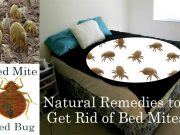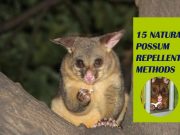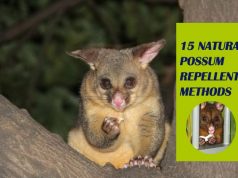A pest infestation is a serious matter that should be dealt with right away. Besides minor skin problems like rashes, bugs can result in a number of respiratory and other physiological problems that are invisible to the naked eye. Prolonged contact between your skin and that of the bugs can lead to nasty boils that may lead to infections. Early detection and immediate pest control measures are required to curb the impact of the palmetto bugs on your home and family.
What is a palmetto bug?
A palmetto roach is a sub-species of cockroaches that are mahogany-brown in color and can be readily found in palmetto trees in coastal regions. The baby palmetto bugs look like the average household cockroach but are a bit smaller. These bugs can also fly, much like their counterparts, although not over great distances. The estimated lifespan of a palmetto bug can stretches up to a year, sometimes beyond, especially for females. Although they are just as common as the typical American cockroach, they are more prevalent near the coast, because of the moist and humid weather conditions, thereby earning them the name, the Florida Woods Cockroach.
What attracts palmetto bugs?
As mentioned before, palmetto bugs thrive in damp areas, which is why they are so commonplace on the coast. This includes unsanitary conditions in places like garbage dumps and gardens with lots of fruit-bearing trees and herbs. Not only do these places provide the bugs with the optimum living conditions they require to live and populate, but also they are overflowing with abundant food materials for them. If you suspect that there are palmetto bugs in your home, first check the bathroom and then proceed to the kitchen, crawlspaces and other areas in your house where these bugs might be in close proximity with food.
Apart from keeping your house clean, make sure that sweet food items are kept covered so as not to attract pests. Also, keep your doors and windows shut during dusk and dawn as that’s when pests are in flight.
Do palmetto bugs bite?
These roaches are notorious biters and skin contact with their saliva can cause painful, pus-filled bumps and lesions. In case you have an open wound that comes in contact with the bugs, the situation can get a lot worse, and become fatal if not treated in time. Palmetto bug feces and bodily shedding that these pests leave around the house can trigger serious allergies and asthma attacks, especially in small children and the elderly. These stinky creatures and can make your entire house smell rather foul.
Palmetto roaches, like most other variants of pests, are not directly harmful but because they carry a host of other bacteria and viruses on their body, can contaminate the air, food, and water that you consume. This could make you severely unwell. For instance, more often than not, these bugs are found to be carrying pathogens on themselves that cause salmonella.
Are palmetto bugs roaches? Palmetto Bugs Vs Cockroach
Though palmetto bugs belong to the same family of insects, subtle differences do exist between the two. One way to distinguish between the two is that the household cockroach prefers well-lit areas, whereas palmettos would rather hide in the dark. Their appearance is also a ground for differentiation because the former is larger, has a lighter complexion and larger wings than the latter.
Home Remedies to Get Rid of Palmetto Bugs Naturally
We have listed below the top 10 completely safe ways by which you can successfully combat the palmetto bugs problem naturally:
1. Soap Water For The Win!
Be it body soap or detergent, soapy water is one of the easiest and cheapest ways to get rid of palmetto bugs the natural way. Not only do they kill fully-grown bugs, but also destroy the larvae. The water, coupled with the soap, become palmetto bug traps and make it impossible for it to breathe. The bug gradually suffocates and dies.
Take a spray bottle and fill it with half a liter of lukewarm water. Add a couple tablespoons of liquid or powdered soap to it and shake the mixture vigorously till it lathers up. This mixture is to be applied twice a day to all those nooks and crannies of your house where the bugs may be living, especially those tunnels that connect the interior of your house to the exterior. For an enhanced impact, add a few drops of neem or peppermint essential oil to the soapy mixture.
2. Diatomaceous Earth, The Natural Pesticide
An organic pesticide, diatomaceous earth can easily be found at your local gardening supplies store. Make sure that you purchase the kind that is food-grade, especially if you have little children and pets living in your house. This natural insecticide cuts into the body of the bugs and sucks out the water, thereby dehydrating and killing them. The substance works very fast, which is why the bugs do not get ample time to develop resistance to it.
Sprinkle it in places of your house where you suspect an infestation may have taken place. However, keep in mind that the substance becomes ineffective once it becomes damp. Take care to dry out the area beforehand, especially the bathroom. Diatomaceous earth can also be applied topically on your pet’s fur coat. Do not sprinkle the earth on your garden as the dehydrating effect of the substance might kill your plants.
3. Baking Soda For Pest Control
Baking soda can easily be found at your local store for a really small price. Although often used to prepare delicious sweet treats, baking soda is actually quite harmful to pests. It poisons them and completely ruins their digestive tract and stomach lining, causing the palmetto bugs to gradually starve to death. Usually, borax is used for a quick eradication of the pests, but baking soda is a much safer alternative to it.
Prepare a mixture with a few tablespoons of baking soda and the same amount of a sweet liquid such as molten jaggery or honey. It is imperative that you blend the two ingredients thoroughly so that the bugs are not able to separate the baking soda from the sweet treat and only eat the latter. The mixture will not only draw out and kill these annoying flying palmetto bugs, but also other fleas that may have infested your house without your knowledge.
4. Neem Oil To Cleanse Your House
Neem has been in use for centuries in a number of Asian countries for its highly effective antibacterial and antimicrobial properties. The oil that is extracted from the neem plant is an excellent natural solution to get rid of palmetto bugs as well as other pests quickly. They work by means of two steps: one, their bittersweet smell lures the bugs out of their hiding places, and two, once ingested by the pests, they obstruct the normal functioning of their internal hormones and prevent them from breeding.
You can prepare the oil at home yourself or buy it readymade. If you decide to go with the former, make sure that you ground the seeds of the plant into the extract as that is where most of its effectiveness lies. You can apply the oil with a dropper all over your house as it is completely safe, even when ingested.
5. Ground Coffee Residue Can Kill Pests
Not many of us can bring ourselves to start a new day without a cup of freshly-brewed, warm coffee. Instead of throwing away the residue of the coffee powder, store it to naturally treat the palmetto bug infestation in your house. It can eradicate the infestation and is a wonderful remedy to keep palmetto cockroaches from coming back.
You can place the residue in clumps along the cracks and crevices of your house. Alternatively, if you do not want to get the interiors of your house dirty, you can place it out in the sun for a few days in order for the water to dry up. You can then place the dry residue inside the house, which can be cleaned up easily by vacuuming the area. Although this is a highly effective remedy and is one of the most popular natural ones, it takes longer to yield results.
6. Place Your Trust In Catnip To Exterminate Bugs
Catnip is made from the extracts of a plant called Nepeta cataria, and contains excessive amounts of a substance called nepetalactone. This substance is an excellent insect-repellant that is just as effective as pesticides made with harmful chemicals, if not more. Catnips are extremely safe and will not cause any damage if ingested by your pets. They can also be easily cleaned up with a vacuum hose.
They can be sprinkled like a powder in places of infestation. You can also make a tea out of the catnip by steeping it in boiling water for a couple of minutes. Pour the lukewarm tea into a spray bottle and use at least 3-4 times a day. Similarly, you can substitute the catnip with fresh mint leaves and use them to make a lukewarm mint tea spray. Catnip is also made from a variant of the mint plant.
7. Use pyrethrum to combat bugs
Pyrethrum is a compound that is one of the active ingredients in chrysanthemum flowers. They are the ultimate palmetto bug killer and work wonders as a preventative measure. This is why this natural remedy is often employed by owners of boats and ship to make sure that no bugs and pests are on board.
Chrysanthemum leaves are super easy to find, and to prepare this solution, you will require around 5 flowers. Separate the flower heads from the stems and scoop out the ovules. Steep the granules along with the petals in hot water for a solid 10 minutes. Drain the flower parts from the spray and add a few teaspoons of detergent powder to the water. Stir thoroughly and pour the mixture in a spray bottle. The mixture needs to be strategically sprayed at least 2-3 times every day, and you will see results in a matter of weeks.
8. Bugs hate broccoli just as much as you!
Tactfully placing certain select food items in your house can help attract as well as repel bugs. For instance, green vegetables that are high in water content, like broccoli and cucumber, are unbearable for a small palmetto bug. Place a couple slices of cucumber or a stick of broccoli near the site of infestation and the bugs will have cleared the place out completely within the week. Make sure, however, that the vegetable pieces are as fresh as possible as otherwise, they might lose their effectiveness.
On the other hand, if your aim is to attract all the bugs to one place so that you can kill them off in one go, sugar, honey, or even starchy breakfast cereals can help you achieve that. Mix 5-6 tablespoons of the sweetener in half a cup of water. This will draw out all the bugs into the glass. However, the water will trap and suffocate them.
9. Bay Leaves Repel Insects Like None Other
Bay leaves emit a distinct smell that palmetto bugs find intolerable. They compel the bugs to evacuate the area and not return. These leaves might be a bit difficult to get hold of, which is why it is recommended that you look for them on virtual gardening stores that offer these leaves at much cheaper prices.
You will need 4-5 of these leaves. Crush them up into a fine powder and sprinkle them in the places of your house that are damp, are not cleaned often and close to food sources, such as beneath your refrigerator. This is the best method for pest control using bay leaves. You can also clean up the residue easily afterward. Alternatively, you can also steep the leaves in boiling water for a couple of minutes to make a tea. Pour the lukewarm tea in a spray bottle and administer wherever required.
10. Bugs scream for ice-cream too!
Bugs have just as insatiable a sweet tooth as the rest of us! However, while the worst that ice-cream can do to us is add a few inches to our waistline, it can effectively be the last thing a bug ever gets to eat. Bugs are attracted to the taste of it and while the palmetto bugs eat, the cream melts and traps them. The palmetto bugs slowly suffocate to death in the molten liquid.
Petroleum jelly, especially the flavored ones, can be used as an equally effective substitute if you do not wish to waste expensive ice-cream on pesky bugs. Leave a blob of the jelly where it is most convenient for you, and watch the magic happen. If unflavored jelly is all you have, place a spoonful of jam on a cardboard plate and smear the surface of the plate with the jelly so as to trap the bugs.
How To Get Rid Of Palmetto Bugs?
You can refer to the following measures to ensure that your house stays insect-free:
- Vacuum your house regularly and thoroughly. Cleaning helps kill half the pest population in your house easily.
- Seal the nooks and crannies so as not to let the bugs navigate around your house freely. You can find plenty of seals and bug fences at your local hardware store. Because there is an abundance of palmetto bugs in Florida, most houses have screen doors as deterrents.
- Do not leave sweet food out of the refrigerator for too long, especially during summers. Make sure that there is no food debris lying around.
Concluding remarks
Make sure that you start implementing proper measures for pest control at the earliest, and follow it religiously till the infestation has been completely eradicated. Once it has been accomplished, preventative measures should be implemented for at least a couple of months to deter the bugs from finding their way back.
Related Helpful Resources –

































